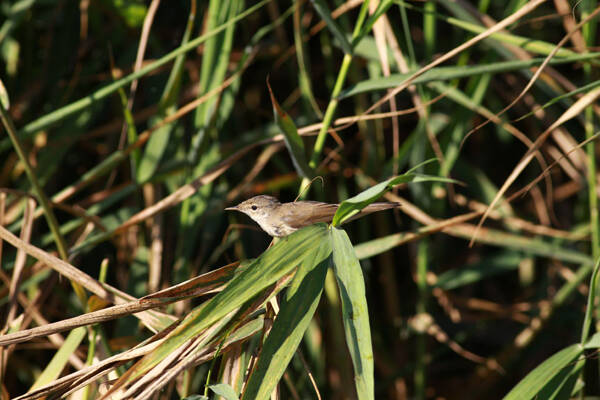Acrocephalus scirpaceus
IUCN
LCBasic Information
Scientific classification
- name:Acrocephalus scirpaceus
- Scientific Name:Acrocephalus scirpaceus,Large-billed Warbler
- Outline:Songbird
- Family:Passeriformes Ornithogalidae Reed Warbler
Vital signs
- length:120-140mm
- Weight:10-15g
- lifetime:
Feature
The eyebrow lines are pale white but not obvious, and usually only the part in front of the eyes is clear.
Distribution and Habitat
In China, it breeds in the northwest of Xinjiang, and stray birds are recorded in Jiangsu. Abroad, it breeds in northern Europe, extending through Russia to Central Asia and Pakistan, south to the Pamir Plateau, and winters in eastern Africa.
Reed warblers mainly inhabit bushes and tall grasses on the banks of lakes, rivers and ponds, and also in marsh wetlands covered with reeds and water plants.
Appearance
Solid color without vertical stripes, similar to the Brandt's reed warbler, with short white eyebrow, no lateral crown stripes, gray-brown upper body, warm brown waist and tail coverts, white lower body, chestnut on the upper chest and flanks, long wings, olive iris, black upper beak, pink lower beak, brown feet.
Details
Reed warblers are small in size and often move alone or in pairs. They like to perch on reed stems and small willow branches. They are sexually active, agile and cautious, and often hide in bushes or grass.

The call is a monotonous and dull 2-4 intermittent low call, sometimes imitating the singing of other birds. The call is a calm "churr" sound.
The food is mainly insects and their larvae. 87.5% of the food is insects, mainly locusts, accounting for 50%, followed by lepidoptera, ants, stink bugs and other pests. In addition, there are some weeds and leaves.

The breeding period is from May to July. The nest is built in reeds and bushes 0.5-1.5 meters above the water surface. The nest is cup-shaped, mainly made of dead grass stems and leaves, and padded with fine grass stems and horsetails. The size of the nest is: 6.5-9 cm in outer diameter, 4.5-5.5 cm in inner diameter, 5.0-7.0 cm in height, and 4-4.5 cm in depth. Each nest lays 3-6 eggs, which are blue-white or green-white with brown or gray spots. The size of the egg is 18.2 (16-20) mm × 13.6 (12.5-14) mm. Both parents incubate and raise the chicks together. The incubation period is 11-12 days, and the nesting period is 10-14 days.
Listed in the IUCN Red List of Threatened Species in 2017 ver 3.1 - Least Concern (LC).







